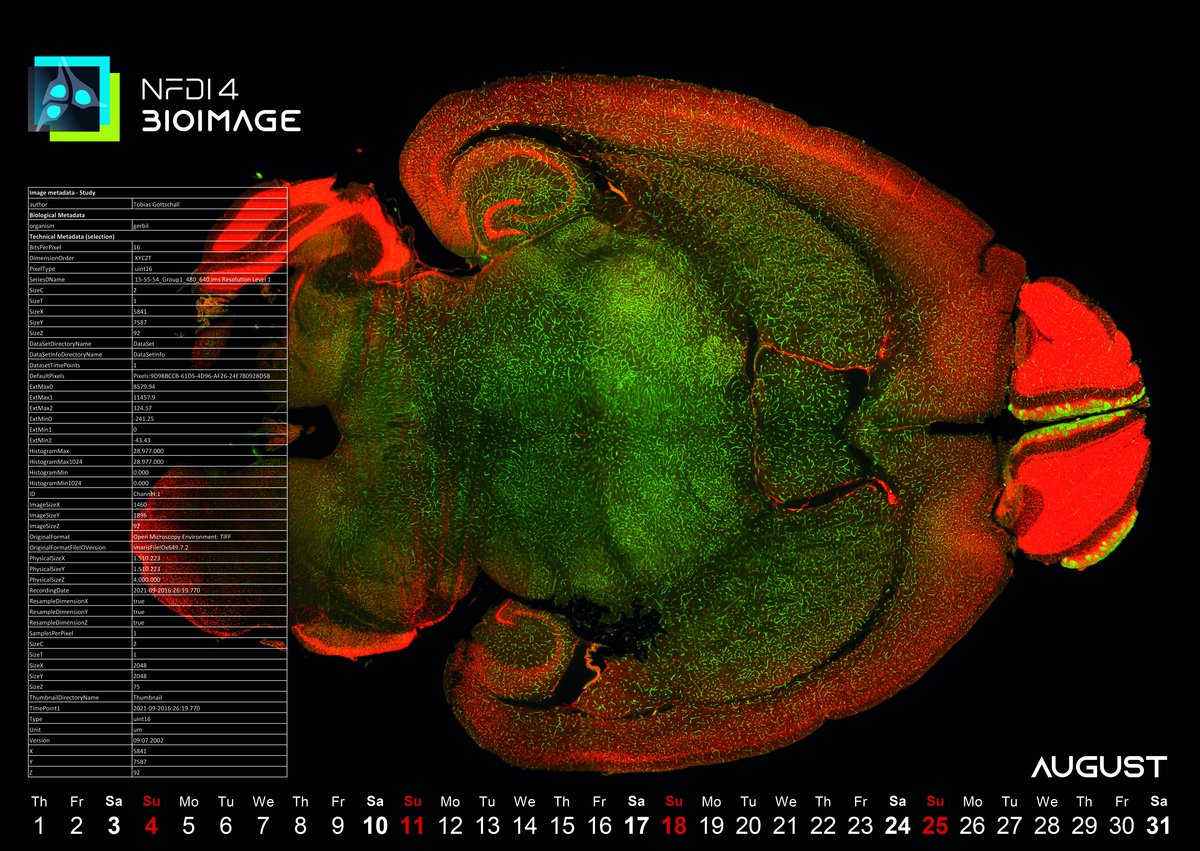
August 2024: FAIR Atlases for Validation of Non-Linear Registration
The image is a 2D slice of a lightsheet fluorescence microscope (LSFM) image of a complete brain of a Mongolian gerbil, which was previously rendered translucent using a clear tissue process. It was prepared at the Leibniz Institute for Neurobiology Magdeburg in the working group of Prof. Dr. Eike Budinger for Tobias Gottschall's master's thesis. The green colour is a staining of the cell bodies using the substance to-pro, which produces fluorescence at a wavelength of 650 nm. The underlying volumetric image has a size of 350 GB and makes it possible to count all cells in 3D of the entire brain of the gerbil, with the exception of the cerebellum. This is a demonstration of the possible use of a brain atlas currently under development for the Gerbil animal model and the first complete and fully automated counting of all cells in the brain known by now. This work is particularly important because it was an attempt to demonstrate the validation of the quality of a non-linear registration using a set of established metrics and then to cross-validate these using atlases of other animal models published by other research groups. This demonstrated the possibility of validating the quality of a non-linear atlas registration fully automatically without the use of human raters, so it can be independently reproduced.
The work that this picture represents is significant for the practical implementation of the FAIR principle in a research context on many levels. Firstly, brain atlases such as the Allen Brain Atlas for mice or for homo sapiens the MNI152, or the Talairach Brain Atlas, which is now considered outdated but historically and medically relevant, are outstanding examples of implemented standards and shared research results that made research more structured and comparable. On the other hand, this research, in the form of published atlases and the knowledge of their development process, used a special form of networking different sources in order to rely on them and remove the subjective view of the researcher from the process.
Later, this research work was the first known work that was completely available from the proposal, the clearing protocols, the image acquisition and processing, the source code of the production of the atlas as well as the validation metrics up to the final publication in both the BIDS (Brain Imaging Data Structure) and the ARC (DataPLANT’s Annotated Research Context) dataset standards. On the other hand, it is also an important example of the FAIR process that, despite all the achievements mentioned, it has not yet been possible to make this work available to the general public or to publish it in peer-reviewed form.
Tobias Gottschall, Leibniz Institute for Neurobiology, Magdeburg, and Riccardo Massei, Data Steward at NFDI4BIOIMAGE and the Center for Environmental Research (UFZ), Leipzig
